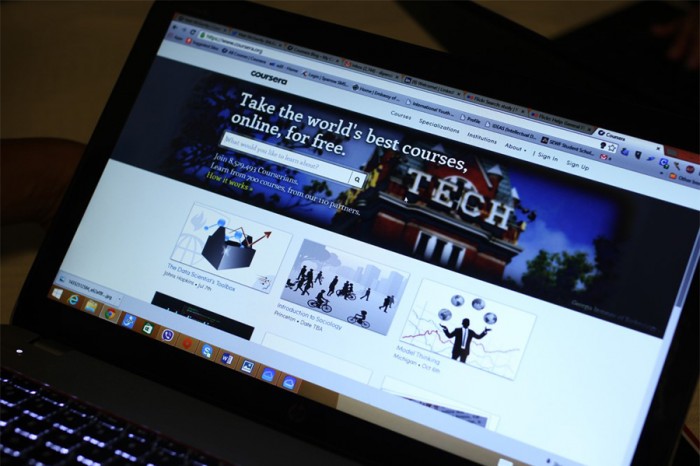
Think of all of the stress you might suffer applying to get into an Ivy League school — and all the money you’d spend to actually attend one.
Well believe it or not, these days the courses offered by these Ivy League universities are available free of cost in few clicks. These online courses have been hailed for “democratizing” higher education.
A typical MOOC — shorthand for “Massive Open Online Course” — uses a blend of technologies like virtual classrooms, discussion forums, online texts and libraries, video lectures, wikis and web videos.
Leading platforms for online learning include Udacity and Khan Academy, as well as newcomers Coursera and edx.
From my home in Nepal, I took “Introduction to Sociology” with Princeton Professor Mitchell Duneier in 2012, and was eventually invited to visit Princeton University (in person) because of my active participation in the online course. Ever since then, MOOCs have been a subject of great interest to me. I’ve taken more than a few MOOCs myself and always enjoyed them.
But I wondered about the experience of other students from the global South.
How did they find out about the courses? What motivated them to take the course, and to stick with it? What platform did they use for the course? What struggles did they face while taking the course?
“I read about it in the news and then decided to go for it,” says Ankur Jhunjhunwala, 25, a student of Faculty of Management Studies (FMS) at Delhi University, in India explaining how he first found out about MOOCs. “I took the course before joining MBA because I had free time; I take the courses today because I can add them to my CV.”
Jhunjhunwala has completed three courses on Coursera: “Understanding Einstein: The Special Theory of Relativity,” “Introduction to Philosophy” and “What Managers can Learn from Great Philosophers”
Referring to the wide range of the availability of the courses Jhunjhunwala adds, “Why should I have any confusion in tapping the opportunity to learn world class content residing in the third world?”
However, not everyone who signs up completes their courses — not by a long shot.
“I signed up for 15 courses and completed five courses,” says Tara Ballav Adhikari, a government employee from Nepal.
“I completed one of the courses on economics and I was not motivated to complete the coursework in second course because I took this course out of curiosity,” says Dikshya Dhakal, a student of Economics at North Seattle College.
“I would be more serious about the course if I would get the credit for it,” Dhakal adds with a faint smile. “I would be even more serious if I had to pay for it.”
Dhakal’s subtle humor reminded me of Anant Agarwal, CEO of edX talking about “active learning” — where a learner has the control of the learning pace and constantly interacts with the content — in the Harvard Edcast: edX Marks the Spot.
I wondered how educators like Agarwal will be able to meet the aspiration of students like Dhakal.

A recent Coursera blog claims to have 7.5 million learners from 190 countries on its website and offers courses from more than 100 renowned educational institutions.
Another platform, edX has several courses offered by prominent universities ranging from the computer sciences to law and literature. The user base of the platform has increased to over 1.6 million.
But a study done by Harvard and MIT earlier this year showed that only five percent (43,196) of the total signups in the first 17 courses offered by edX actually earned the certificate by completing the coursework.
This horrifying statistic has forced many people to consider MOOCs a failure. But on the other hand, with so many students signing up, even that low completion rate is yielding huge numbers of certified students who might otherwise never get an opportunity to learn that material.
“Comparing a small classroom with MOOCs is wrong!” says Matt McGarrity, senior lecturer in the communication department at the University of Washington who has reached over 300,000 people with his public speaking MOOCs on both Coursera and edX. “It is like comparing a novel with a movie adapted from that very novel. Novel is a different genre and the movie is different. Standards from one can inform the critique of the other but should not dictate it.”
But Adhikari says no matter what the critique are, he will continue taking the MOOCs.
“Despite the poor internet service and 16 hours of power cut every day, having the access to world-class courses free of cost gives me a sense of privilege.”


This is new to me, so I want to learn more about MOOCS…I agree that it levels the playing field for everyone. Are the courses not for credit? Do you feel as though you have ample opportunity to interact with the professor and other students even though it is a “virtual” classroom. Very interesting article!